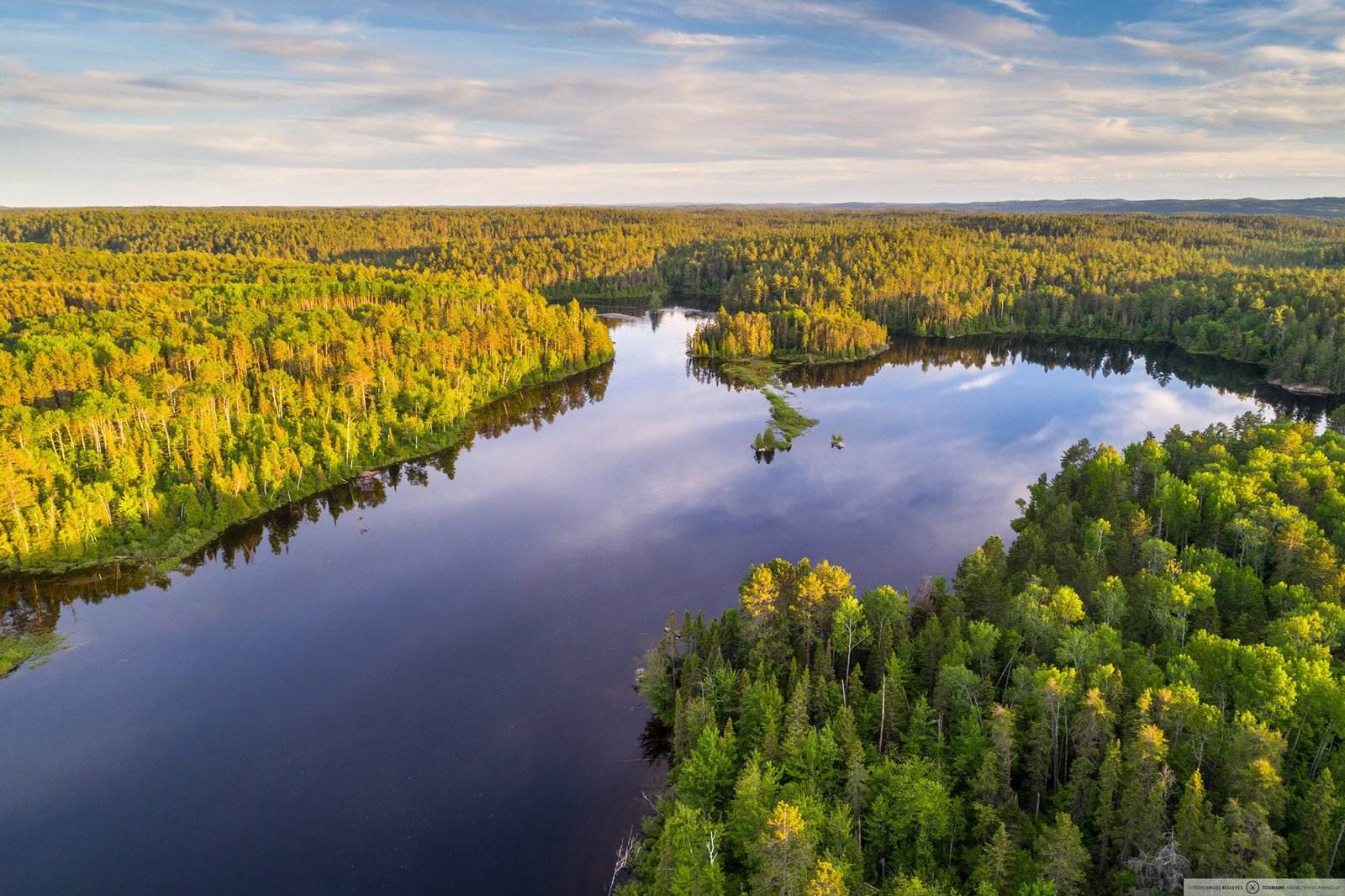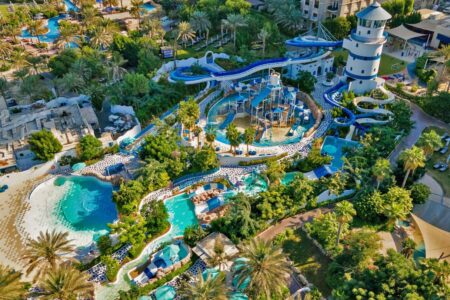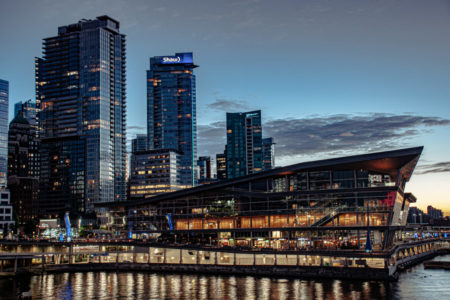
Holidays in Abitibi-Témiscamingue
Getting there by train
Some texts resonate so much with us that we want to share them and get into action as soon as possible. Emilie-Parent Bouchard’s 2019 book entitled “Un siècle au rythme du chemin de fer” had that effect on me.
I started to look at the schedules and fares of this VIA Rail train that connects Montreal and Senneterre and started learning of what this vast region that is Abitibi-Témiscamingue has to offer. I decided to go. That is, if I could. As for the region, in the orange zone at the time of writing, most establishments and activities say they plan to be accessible again for the 2021 summer season.
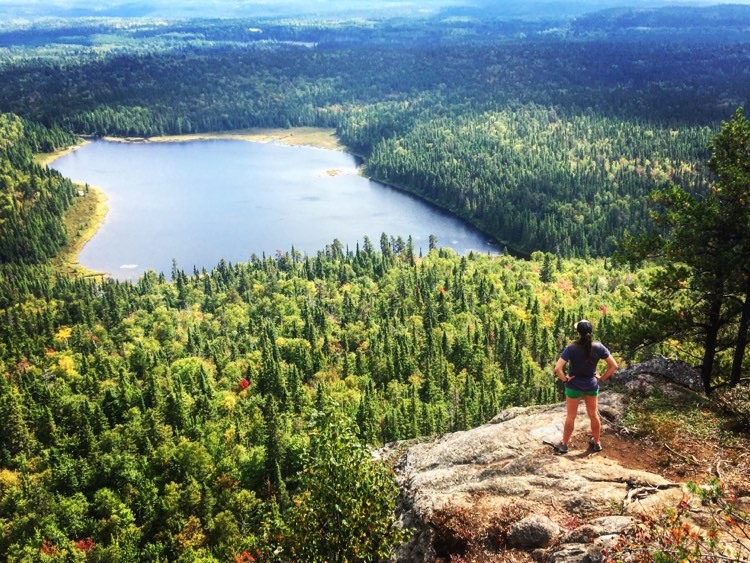
You should know that there is currently only one departure per week to Senneterre, on Fridays. Returns to Montreal are on Sundays. Also note that the trip takes about 11:30 hours, sometimes at the pace of a slug that stops at the signs made along the rails by fishermen, hoarder, kayakers, canoeists and natives coming out of their forest expeditions.
For a slow travel adept like me, it’s perfect.
The cost for economy class is $186 per adult, senior (60+) and youth (12-25) and $92 for children (2-11) for the round trip. In addition, there are taxes. And let’s not forget that our CASH Air Miles can cover the cost of VIA RAIL tickets.
Since you are arriving by train, you must take care to book your rental car in Senneterre. A few small hotels can accommodate you for the first night unless you prefer to drive to Val-D’Or, 45 minutes away.
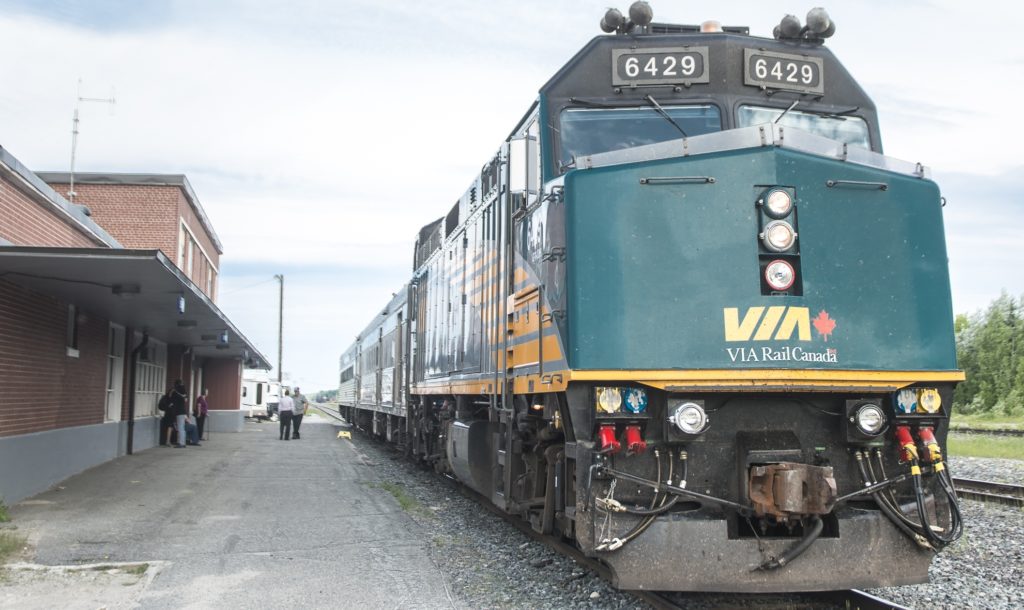
An Immersion in Nature
Abitibi-Témiscamingue ‘s tourism offer invites you to enjoy its omnipresent nature.
Parks, wilderness or ready-to-camp campsites and hikes for all levels will delight outdoor enthusiasts. The ontemplatives will be happy with the gliding of paddle boards, kayaks and canoes on calm waters. Or will enjoy the view of the agricultural and mountainous landscapes of Témiscamingue.
There are also numerous outfitting operations for fishing and hunting. Need a fishing guide to ensure a good catch? Here they are.
And in this pine-filled boreal forest, full of spruce and birch trees, hundreds of lakes abound with fish. A walleye for dinner?
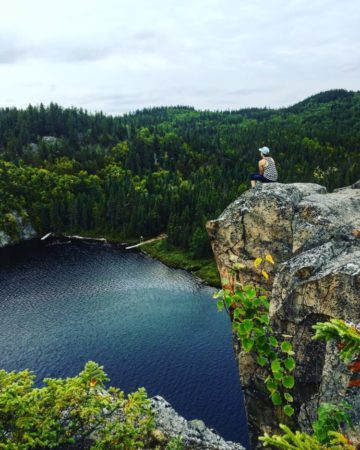
Advice from Valerie, one of the Facebook Group‘s travellers. If SEPAQ parks like the one in of Aiguebelle, La Vérendrye Wildlife Sanctuary and Opémican National Park no longer offer the type of lodging you want, nothing prevents you from taking a day pass ($8.90 /adult – free for children and free for all at the Wildlife Sanctuary).
Here are her recommendations:
- The suspended footbridge of the Parc d’Aiguebelle and its 8 km trail: the Aventurier. You can even rent a canoe at Lake Lahaie and go under the bridge.
- The spiral staircase and the trails “Les Remparts et Le Prospecteur” of the Kékéko Hills.
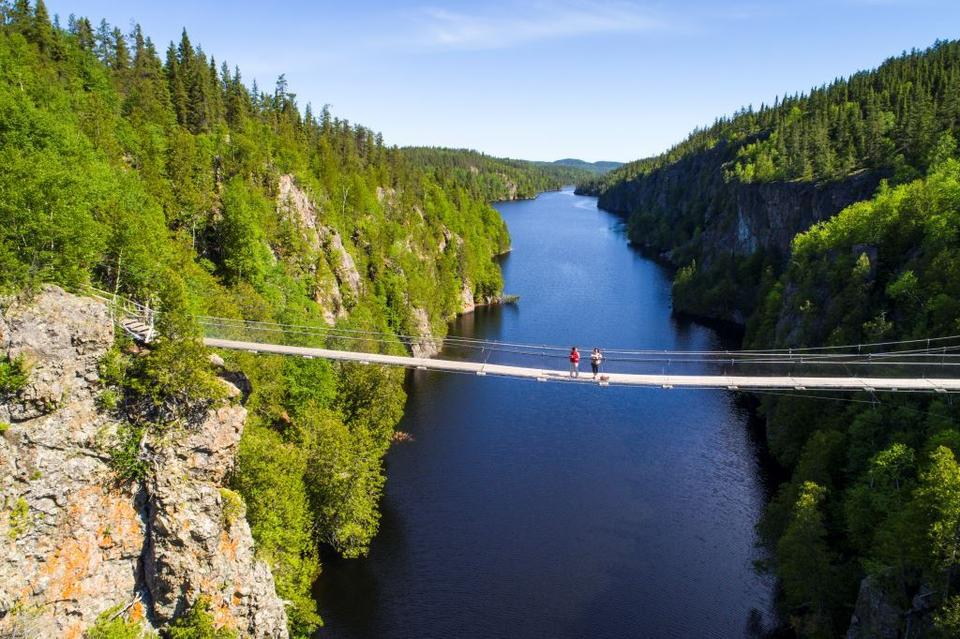
History and culture
The first residents
Abitibi-Témiscamingue also invites you to discover its history, which I will summarize here in four stages.
First of all, that of its first occupants, the Algonquin nomads, who lived there for thousands of years. We owe them the terms Abitibi and Témiscamingue which mean respectively: “where the waters separate” and “at the deep lake”.
To fully honour their heritage, the Indigenous Tourism website is full of information.
POW-WOWS should be held in the summer of 2021 as they are every year in several communities. The one in Pikogan stands out every June. The Val-D’Or Native Friendship center will be selling beautiful items and a home-cooked meal in the cafeteria.
Accommodation should also be available in the chalets or teepees at the Kinawit center on the shores of Lake Lemoine in Val-d’Or. Tours, activities and workshops related to Aboriginal culture are usually offered on site. It is best to call to make sure.
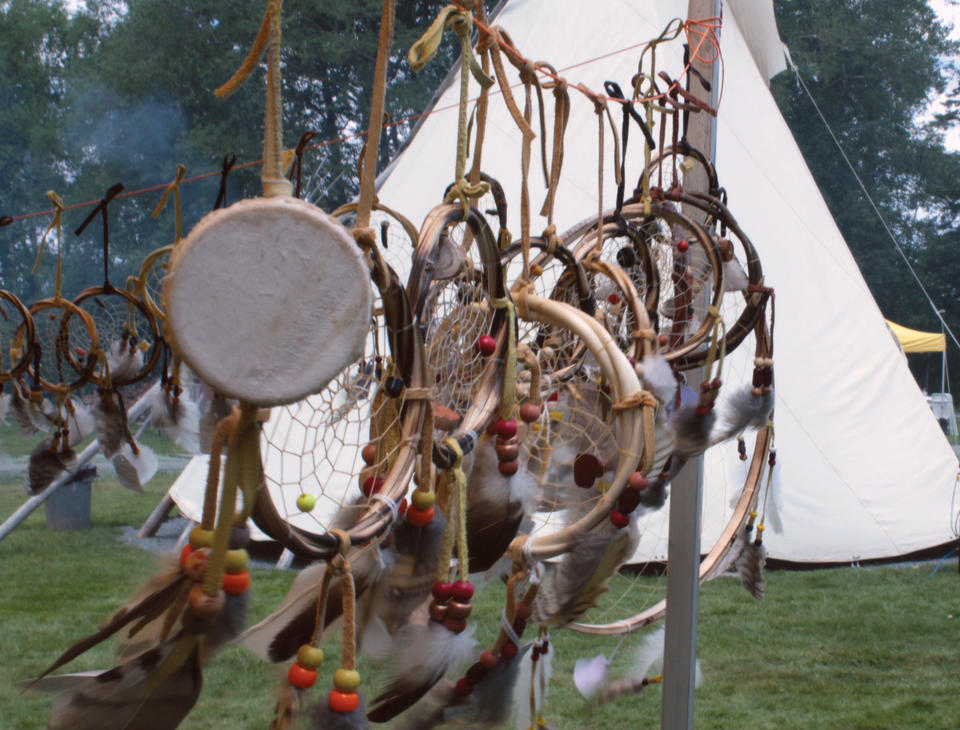
The fur trade era
The region was not visited by Europeans until the mid-17th century, in an economic context based on the fur trade.
The wealth of wildlife in this immense territory (beavers, mink, wolves, foxes, etc.) and its proximity to Hudson and James Bays attracted coureurs des bois, trappers and traders.
In this way, they responded to the demand of the European bourgeoisie for fur coats and felt hats.
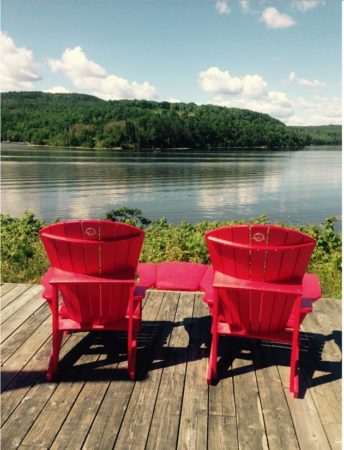
To immortalize this era, you can visit the Obadjiwan–Fort Témiscamingue National Historic Site, a Parks Canada site.
It is a small interpretation center with a permanent exhibit, discovery activities, a short film and beautiful red Adirondack chairs set up in front of the large Lake Timiskaming. It’s impossible not to imagine the fur-laden canoes heading our way.
Find out what programming is available for 2021 from Parks Canada’s National Information Service at 1-888-773-8888.
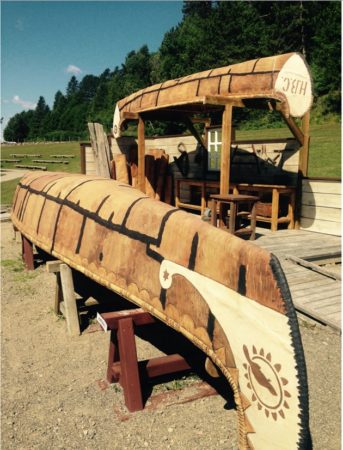
Logging and Railway Construction
Then came the years of large-scale logging, followed by the colonization of Témiscamingue in the south of the territory and then Abitibi. That was in the years 1850-1920.
The tourist offer which represents this period: the T.E. Draper-Chantier Gédéon historical site located in Angliers, Témiscamingue. It introduces us to the work of the lumberjacks and the log drive that the men carried out during those years on the magnificent Lac des Quinze.
Visitors can climb aboard the T.E. Draper, the imposing logging tug used between 1920 and 1972, and then discover the reconstitution of five lumber camps at the Gédéon yard.
Finally, with the construction of the railroad, this era was replaced by the arrival of thousands of gold seekers. The great economic success of the Abitibi-Témiscamingue region.
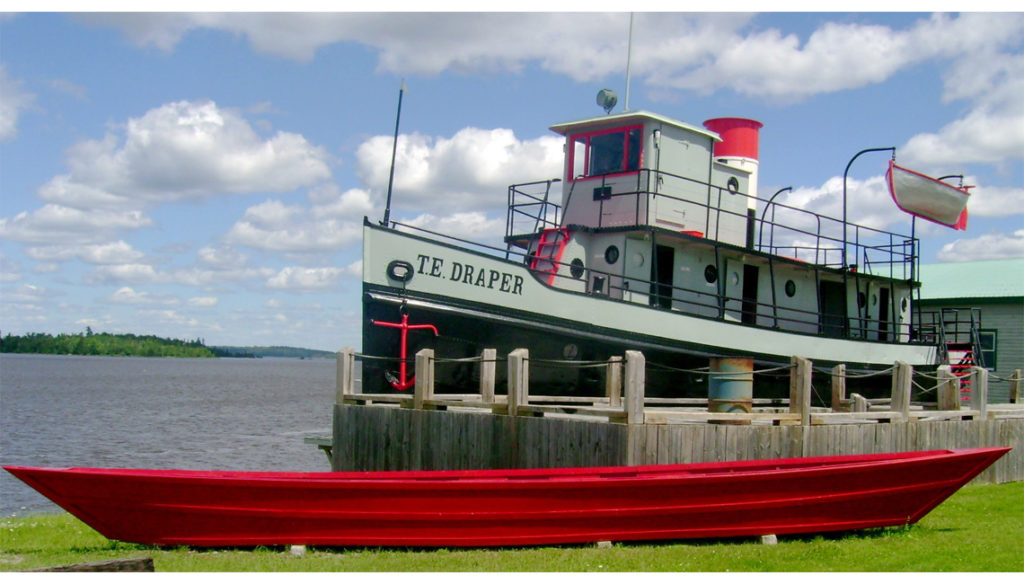
The mines
Gold or copper, silver, zinc, lead or nickel, the subsoil of Abitibi-Témiscamingue has literally put the territory on the map. Despite the diversification of its economy over the years, the mining industry remains the economic heart of the region.
Val-D’or has found its name there and the tourist offer which focuses on the underground is very rich.
The Cité de l’Or allows us to understand the importance of the mining industry in Abitibi-Témiscamingue. A 2-hour visit takes us into the belly of the earth, more than 90 m deep.
It can be followed by a walk in the mining village of Bourlamaque near the Cité de l’Or where the small log houses dating from the 1940s are still inhabited.
But if you want to see with your own eyes the gigantism of an open-pit mine with its trucks whose wheels are twice the height of a man, you have to go and see the gold mine of the Canadian Malartic project at Malartic itself, about twenty minutes from Val-d’Or.
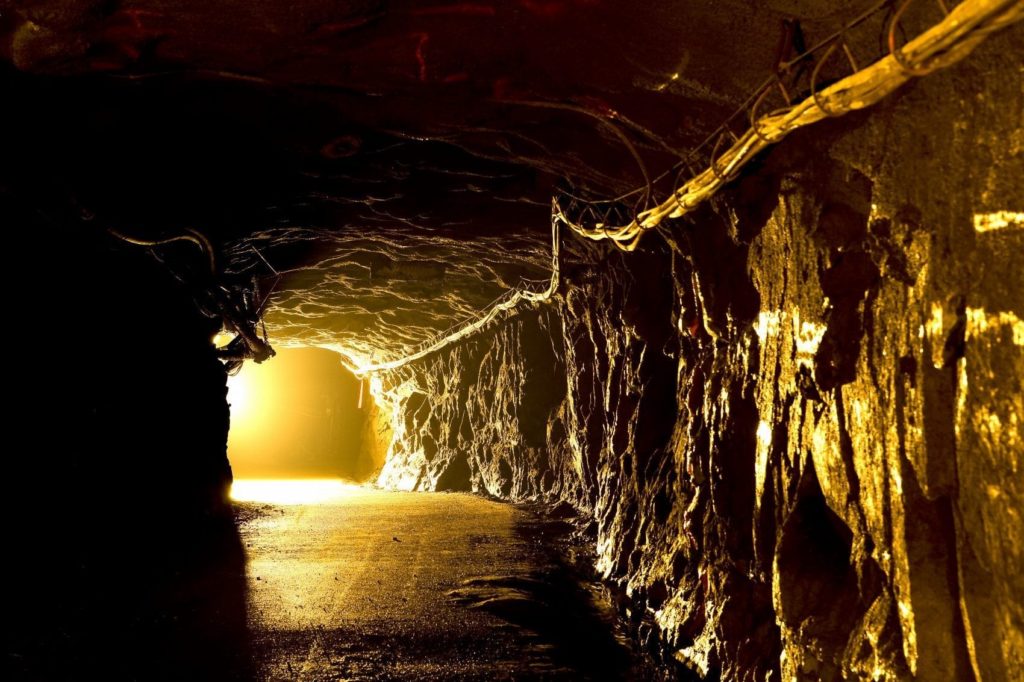
Hopefully, tours will resume in 2021 to get up close and personal with the impressive trucks that weigh 850,000 pounds and have 2,600 horsepower. The associated mineralogical museum remained open.

Resident members advice
Finally, we asked a few members who live in the area to give us their ideas for accommodation, restaurants and activities to help us discover the region. Plus, of course, little secrets.
Here you go:
- The directory of outdoor activities in the region: Accès Plein Air. It includes all the cycling, boating, hiking, snowshoeing and cross-country skiing trails in Region 08. A must-see reference that allows Temiscabitibians and visitors to discover the many nature oasis. Camping sites are also listed. Both intense activities and family outings are mentioned in this guide, which is a pleasure for its users.
- For animal lovers, a detour to Amos for a visit to the Pageau Refuge is recommended. It takes in wild animals in need, before their rehabilitation. The Chalpagas farm in Saint-Félix-de-Dalquier, near Amos, would also be interesting. And then, the cathedral is worth the detour.
- In Val-D’Or, the recreational forest for its cycling, mountain biking and walking trails.
- You can also rent bicycles for free in Rouyn-Noranda to ride the 8 km loop of Lake Osisko or to go for a ride in town. Tandems and trolleys available. And for paddle board rentals in the same city, it’s here . For golf fans, the Golf belvedere would be the most beautiful course in the region. Finally, in August, the Pyromusical Osisko en lumières festival announced that it would return in 2021.
- La Bannik, located in Ville-Marie near Fort Témiscamingue for its cottages, camping, beach and family activities. In Rouyn Noranda, the Albert Hotel downtown and the Gouverneur Hotel. In Val-D’Or, the Hôtel Forestel and the Auberge l’Orpailleur.
- For catering, there is an interesting network of microbreweries with several exclusive beers. In Val-D’Or, Prospecteur or Entracte, in Rouyn-Noranda, Trèfle Noir and in Témiscamingue, Barbe Broue.
- On the gastronomic side, locals love the food at Le Thaï or the atmosphere at the 2X4 Pub Brut in the Copper Capital, but there is a wide range of food on offer in the city centre with pasta and pizza at Le Pizzé or steaks at Le Moulin Noir. The menus are also interesting in Val-d’Or, whether it is for a quick Mexican meal at Habaneros or a more copious meal at the resto-bar l’Entracte, or at the distinguished Windsor.
Recommended credit cards
To save money on your vacation in the region, we recommend several offers from the best credit cards in Canada.
First, the American Express Cobalt™ Card. With this card, you can earn 5 points per dollar for your purchases at grocery stores, restaurants, bars and convenience stores, and food deliveries. And 2 points per dollar for your travel and transportation purchases (Airbnb, hotels, train, flights, car rentals, etc.).
You can then use your points for any travel purchase made with the card: 10,000 points = $100. Nothing could be easier!
Next is the Marriott Bonvoy™ American Express® Card. With this card, you can earn 5 points per dollar on all your spending at Marriott Bonvoy locations (there are over 250 in Canada). And 2 points per dollar on all your purchases.
You’ll earn 60,000 Marriott Bonvoy points as a welcome bonus, enough to get you several free nights at Marriott Bonvoy hotels. And every year, as a cardholder, you get a free night certificate (worth 35,000 points).
Or the Best Western Rewards® Mastercard: you can earn 20,000 points after your first purchase. Enough to get at least one free hotel night. And this card has no annual fee!
Finally, the BMO® AIR MILES® World Elite®* Mastercard®*. With this card, you can get an exceptional welcome bonus of 3,000 AIR MILES Bonus Miles (exclusive to milesopedia). You can then use these miles for travel purchases such as train tickets with VIA Rail, flights, or hotels. Or cash back at the grocery store.
Take advantage of it: this credit card has no annual fee for the first year!
Crédit Photo de couverture: Tourisme Abitibi-Témiscamingue



